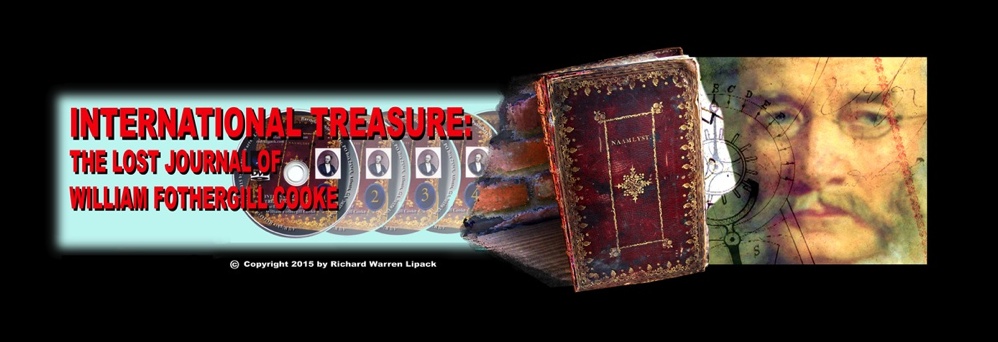
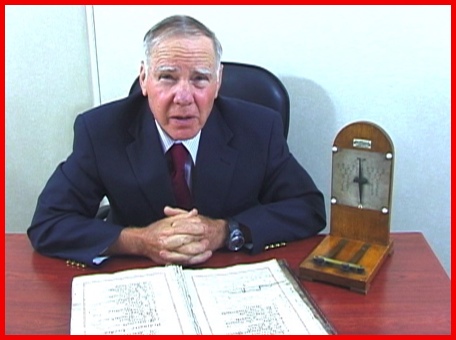
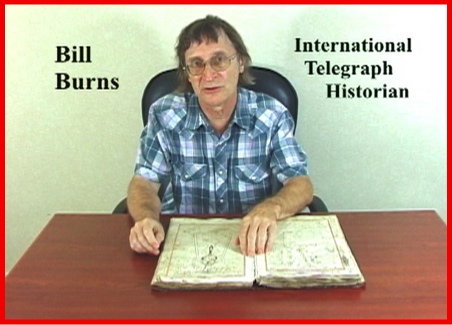
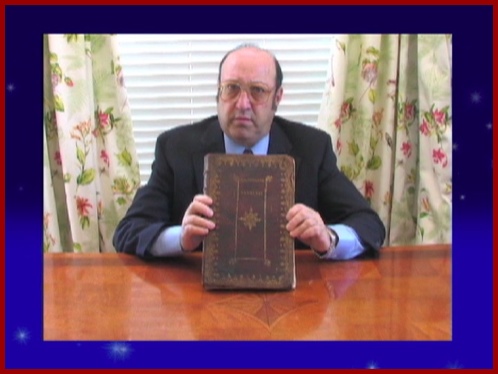
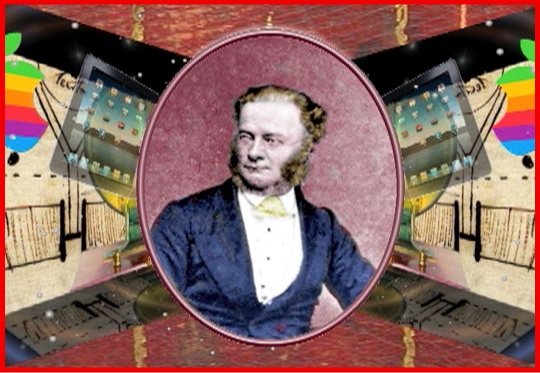
THE ORIGIN & DISCOVERY
OF MODERN ELECTRONIC
BINARY COMMUNICATIONS & PATH TO THE INTERNET REVEALED FOR FIRST TIME IN CENTURIES LOST EUROPEAN MANUSCRIPT BROUGHT TO AMERICA IN 1842 NOW REVEALED!
'THE FATHER OF PERFECTED DIGITAL
ELECTRIC COMMUNICATIONS'
AN OBSCURE LATE 18th CENTURY MANUSCRIPT JOURNAL OF EUROPEAN ORIGIN FINALLY COMES TO ALSO BE REVEALED AS THAT OF WILLIAM FOTHERGILL COOKE’S EARLY 19th CENTURY TELEGRAPH BUILDER'S JOURNAL ‘
PROFESSOR EMERITUS
TOM PERERA Ph. D.
Tom Perera was born in New York City in 1938.
He earned his BA, MA. and Ph.D. from Columbia University in New York and continued teaching there for 40 years.
Dr, Perera also joined the faculty of New Jersey's Montclair State University in 1975 and continued teaching as a visiting professor at Columbia until his retirement as Professor Emeritus at Montclair State University in 2002.
As a boy at the age of 13 Tom Perera earned his first Amateur Radio license, sparking a lifelong fascination with electronics and radio that carried over into his career as a professor of Neuroscience.

In this realm Dr. Perera analyzed the coded electrical signals of the human brain and nervous system. This professional persuit eventually led to enduring interests in collecting and writing about telegraph keys and Enigma cipher machines. Professor Perera maintains Internet virtual Telegraph and Radio museums at:
Developing expertise in the study and function of the Enigma cipher machine, Dr. Professor has been serving as consultant to the United Kingdom's Bletchley Park, where the secret German Nazi cipher codes were "cracked" by cipher mastermind Alan Turing and his Bletchley Park team associates during World War II. Dr. Perera later established an online Internet museum treating the Enigma and all aspects pertaining to other forms of cryptology. Known as the Enigma Museum, the site can be found at:
A vital discussion providing cohesive data treating the discovery by historian and archivist Richard Warren Lipack
of the Cooke telegraph manuscript journal can be found on Dr. Perera's Telegraph Museum website at:
Dr. Perera has written hundreds of articles, books, CDs, consulted for numerous museums, universities, and public and private television stations, and given thousands of lectures and demonstrations. His series of 26 computer software programs has been used in 90% of the colleges in the world. Professor Perera travels frequently to Europe to lecture and hunt for technological artifacts. He is now retired and lives with his family on a mountaintop farm in Vermont.
SEE & HEAR ABOUT THE DISCOVERY COMPLETELY REWRITING TELEGRAPH AND ELECTRONIC COMMUNICATIONS HISTORY AS REVEALED BY THE WORLD'S
TOP INTERNATIONAL ELECTRICAL HISTORIANS
BILL BURNS
Bill Burns was born in the United Kingdom and lived in Manchester during the early part of his life. Entering the University of Leeds following his primary and secondary education, Bill took interest in electronics. After graduation following the receipt of a Bachelor of Science degree in electrical engineering at the University of Leeds in 1968, Bill Burns entered into the English electrical trade under the employ of the BBC (British Broadcasting Co.), in the organization's External Services Radio division, working in that sector for three years.
Shortly after meeting his future wife, an American, at this time in 1971, Burns moved to the United States to continue his career in the electrical field.
Settling in New York, he spent a number of years in the high-end audio industry at a Long Island company, during which time Bill also reviewed equipment and wrote articles on audio, video, and computers for a group of consumer magazines.
Turning to computers full time in the late 1970s, Bill Burns worked on both hardware and software, and in 1993 he established his own computer consulting business, which still occupies some of his time.
The research Burns engaged in while formulating articles on subjects as diverse as audio recording and reproduction theory, video tape recorder development, electronic music instruments, and the history of computing, eventually led to a general interest in early technology. In the 1980's he began collecting instruments and artifacts from the fields of electricity and communications, and in 1994 a chance find of a section of the 1857 Atlantic cable led to his specialization in undersea cable history and this catalyst also caused him to dig deeper into the realm of the history of telegraphy in general. Before he knew it, electrical product story writer and author Burns began to be led down the path of that of a historian.
In 1995 Burns set up the first version of the Atlantic Cable website, (described in more detail below), which initially, was merely a single page posting a bibliography of books on undersea telegraphy. As he acquired more material - cable samples, instruments, books, documents, and other artifacts - each new find was added to the site. The website now has over 850 pages on all aspects of undersea communications from 1850 until the present and is the most comprehensive site of its kind in the entire world, in league with the history website of IEEE in several ways.
Many site visitors have also contributed photographs, stories, and articles, and in several cases long-lost relatives and friends have been re-united through the website.
Bill Burns in conjunction with FTL Design, the organization which manages his various website interests, operates and manages several other adjunct websites under the Atlantic Cable masthead treating a plethora of electrical technology history besides merely telegraphy.
But most significantly, Bill Burns' creation and formal webmaster efforts continue to develop the highly important Internet communicationsAtlantic Cable history website he started in 1995, now codified more specifically as:
History of the Atlantic Cable & Undersea
Communications - from the first submarine cable of
1850 to the worldwide fiber optic network
This ever expanding, exhaustive and highly comprehensive telegraph history website on primarily British telegraph history can still be found at the original Internet address it had in 1995, when first created at the dawn of the Internet, at:
The Atlantic Cable website is operated as a non-commercial source base on the history of telegraph communications with, as the site proclaims, its primary "mission is to make available on line as much information as possible" pertaining to the telegraph and its allied histories.
A thorough discussion by Burns and the late English telegraph historian Steven Roberts can be found on the site for Frederick A. Kerby, the primary and only machinist cited in the 1836-1842 William Fothergill Cooke manuscript journal. As it was Kerby had brought the Cooke journal to North America in late 1842. The exhaustive scholarly work by the Burns and Roberts team entitled Frederick A. Kerby can be found at the following link;
http://atlantic-cable.com/Article/Kerby/
The late English historian and author Steven Roberts (1950-2012), conducted much vital research and contributed significant source information to the Kerby treatise. Roberts had founded and operated the Distant Writing Internet English telegraph history website.
As of January 2014, according to Bill Burns - Distant Writing currently assigned Webmaster - the Distant Writing website has been archived for preservation by the British Library.
In the summer of 2012, Burns had the unique opportunity to have had a hands-on evaluation of the Cooke telegraph manuscript journal prior to the final palegraphic authentication by journal discoverer Richard Warren Lipack, and before a Cooke provenance was finally wholly codified. Combining their acute research prowess, the Burns and Roberts team contributed more significant data to the historical record than had been previously known, and their contribution to the annals of telegraph and commincations history can not be underestimated.
Bill's interest in cable history has taken him to cable stations at Heart's Content (Newfoundland), Valentia and Waterville (Ireland), Porthcurno (Cornwall) and Orleans (Cape Cod, Massachusetts), and to archives and museums in New York, Washington and Key West in the USA; London, Edinburgh, Manchester and Hull in Britain; and others in a number of European countries. He has presented papers on cable history to an IEEE / IEE conference at University College London, at cable company Hibernia Atlantic's annual technical meeting, at the 150th Anniversary Celebration for the 1858 Atlantic cable at the New-York Historical Society (which he instigated and helped organize), at the annual conference of the Antique Wireless Association for a number of years, and most recently, at the historic cable station in Valentia, Ireland, in 2016 for the celebration of the 150th anniversary of the 1866 Atlantic cable.
Bill Burns and family currently makes his home in Long Island, New York.
Richard Warren Lipack
Historian and Archivist - with Wm. F. Cooke Telegraph Journal
Dr. Tom Perera
WilliamFothergillCooke.com
CODEX LIPACK